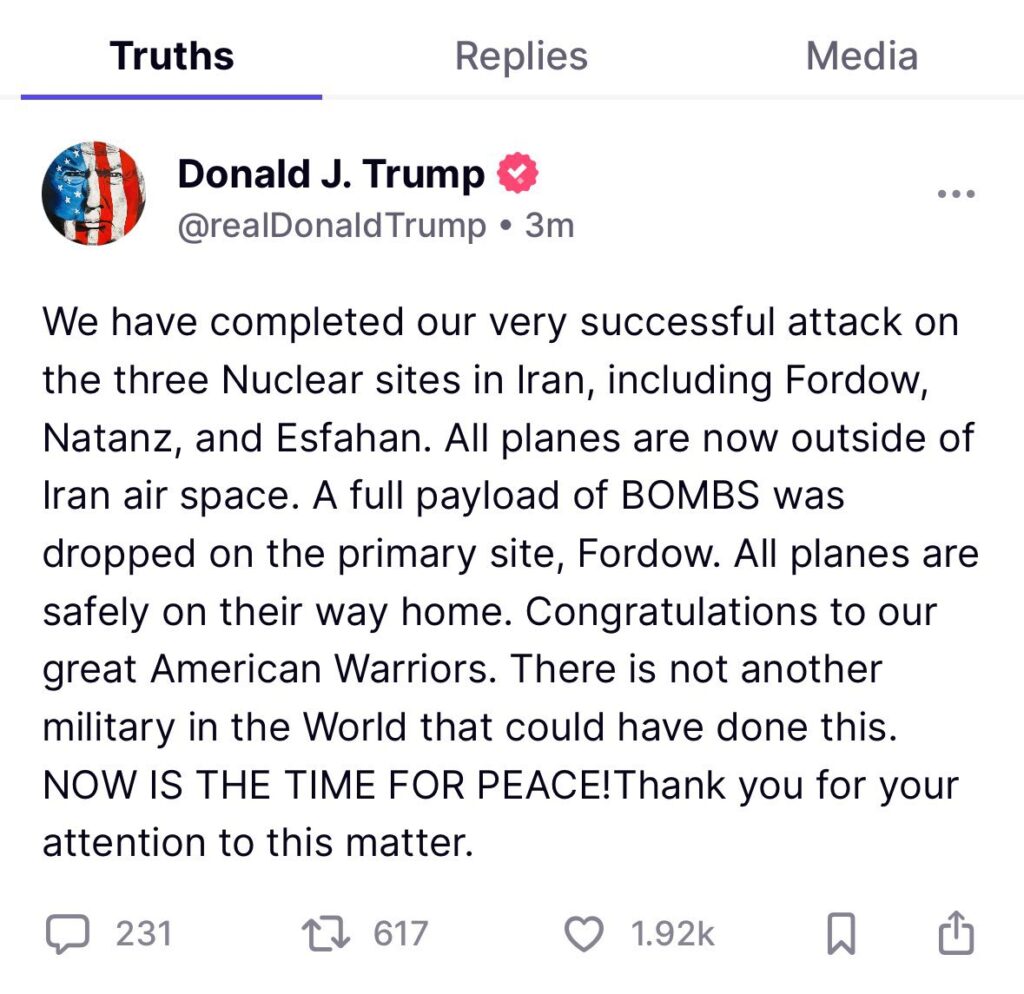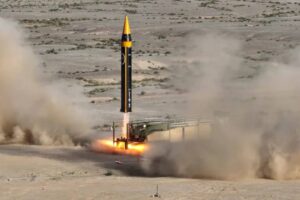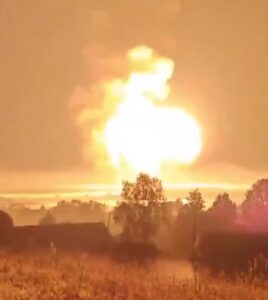U.S. Conducts Airstrikes on three Iranian Nuclear Sites: Trump Declares “Spectacular Success”

June 22, 2025 – In a historic escalation of tensions in the Middle East, the United States launched airstrikes on three key Iranian nuclear facilities—Fordow, Natanz, and Esfahan—on Saturday, June 21, 2025. President Donald J. Trump announced the operation on his Truth Social platform, describing it as a “very successful attack” and claiming that Iran’s nuclear enrichment capabilities were “completely and totally obliterated.” The strikes mark the first direct U.S. military action against Iran, aligning with Israel’s ongoing campaign to dismantle Tehran’s nuclear program.
The Operation: A Coordinated Strike
According to reports,
the U.S. deployed B-2 Spirit stealth bombers, which dropped six GBU-57 Massive Ordnance Penetrator (MOP) bombs—commonly known as “bunker busters”—on the heavily fortified Fordow nuclear enrichment facility, located deep underground near Qom. The B-2s, the only aircraft capable of carrying the 30,000-pound MOP bombs, took off from Whiteman Air Force Base in Missouri. Additionally, U.S. Navy submarines fired 30 Tomahawk Land Attack Missiles (TLAM) at the Natanz and Esfahan sites, targeting Iran’s largest uranium enrichment facility and a uranium conversion plant, respectively.
President Trump, in a televised address from the White House flanked by Vice President JD Vance, Secretary of State Marco Rubio, and Defense Secretary Pete Hegseth, emphasized the operation’s objective: to eliminate Iran’s nuclear threat. “Our objective was the destruction of Iran’s nuclear enrichment capacity and a stop to the nuclear threat posed by the world’s number one state sponsor of terror,” he said. Trump hailed the strikes as a “spectacular military success” and warned Iran that further attacks would follow if peace is not pursued.
The Targets: Iran’s Nuclear Infrastructure
The three targeted sites are central to Iran’s nuclear ambitions:
- Fordow: Buried 80-90 meters under a mountain near Qom, Fordow is Iran’s most fortified uranium enrichment facility. Designed to withstand conventional airstrikes, it has been a focal point of concern due to its potential to produce weapons-grade uranium. The U.S. used multiple MOP bombs to penetrate its defenses, with Trump claiming, “Fordow is gone.”
- Natanz: Located 250 kilometers south of Tehran, Natanz is Iran’s largest uranium enrichment complex, housing thousands of centrifuges. While partially underground, it is less fortified than Fordow and has been targeted previously, including by Israel’s strikes last week and the Stuxnet cyberattack in 2010.
- Esfahan: Home to a uranium conversion facility, Esfahan processes natural uranium into uranium hexafluoride gas, a key component for enrichment. The site, struck by Israel on June 13, sustained damage to four buildings but posed a higher risk of chemical contamination than radiation.
Iranian officials confirmed the attacks, with state-run IRNA and Tasnim news agencies reporting that air defenses were activated around Fordow and explosions were heard near Isfahan and Natanz. A spokesperson for Qom’s crisis management center noted that part of Fordow’s perimeter was hit, while an Iranian national security analyst claimed no “irrevocable” damage occurred, asserting that Fordow had been evacuated in anticipation of the strikes.
Context and Escalation
The U.S. strikes follow more than a week of Israeli airstrikes on Iran, which began on June 13, 2025, targeting Iran’s air defenses, missile capabilities, and nuclear facilities. Israel’s campaign was launched to preempt what Prime Minister Benjamin Netanyahu described as a “secret Iranian program to build a nuclear bomb.” The International Atomic Energy Agency (IAEA) reported that Iran’s stockpile of 60%-enriched uranium could potentially yield nine nuclear weapons if further enriched to 90%.
Trump’s decision to intervene came after days of deliberation and a failed last-ditch diplomatic effort, including a proposed backchannel meeting with Iranian officials in Istanbul. The U.S. reportedly notified Iran diplomatically that the strikes were limited and not aimed at regime change, though Tehran has warned of retaliation, raising fears of a broader regional conflict.
Reactions: Domestic and International
The U.S. action has sparked polarized responses:
- Support: Israeli Prime Minister Netanyahu praised Trump’s “bold decision,” stating, “Peace through strength. First comes strength, then comes peace.” Top Republicans, including House Speaker Mike Johnson and Senate Majority Leader John Thune, backed the strikes, arguing they were necessary to prevent Iran from acquiring nuclear weapons.
- Criticism: Progressive Democrats, including Rep. Alexandria Ocasio-Cortez and Sen. Bernie Sanders, condemned the strikes as unconstitutional, citing the lack of congressional authorization. Sanders, addressing a rally in Tulsa, Oklahoma, called the attack “grossly unconstitutional,” prompting chants of “no more war.”
- Iran: Iran’s Atomic Energy Organization vowed to continue its nuclear program, denouncing the strikes as a “blatant violation” of international law and accusing the IAEA of complicity. Iranian state media reported at least 430 deaths and 3,500 injuries from the broader Israel-Iran conflict since June 13.
Strategic Implications
Analysts remain uncertain about the extent of damage to Iran’s nuclear facilities, as underground structures may have mitigated some impacts. The IAEA has not yet reported new damage assessments, though earlier statements indicated Fordow remained intact after Israel’s initial strikes. Experts suggest that while the U.S. strikes may delay Iran’s nuclear program, they are unlikely to eliminate it entirely, given Iran’s potential to relocate centrifuges or resume enrichment elsewhere.
The operation has heightened regional tensions, with Israel raising its alert level and restricting activities to essential operations. In the U.S., New York City deployed additional police resources to religious and diplomatic sites as a precaution. The strikes also underscore the unique capabilities of the U.S. military, particularly the B-2 bombers and MOP bombs, which Israel lacks.
Looking Ahead
President Trump framed the strikes as a step toward peace, urging Iran to negotiate an end to the conflict. However, Iran’s threats of retaliation and the ongoing Israel-Iran war raise the specter of further escalation. The international community, including European diplomats engaging with Iran, faces mounting pressure to de-escalate and address Iran’s nuclear ambitions through diplomacy.
As the world awaits clearer assessments of the damage and Iran’s response, the U.S. intervention marks a pivotal moment in Middle East geopolitics, with far-reaching consequences for regional stability and Trump’s second-term legacy.
Sources: Reuters, The Guardian, The New York Times, The Washington Post, CNN, Fox News, Al-Monitor, posts on X.





